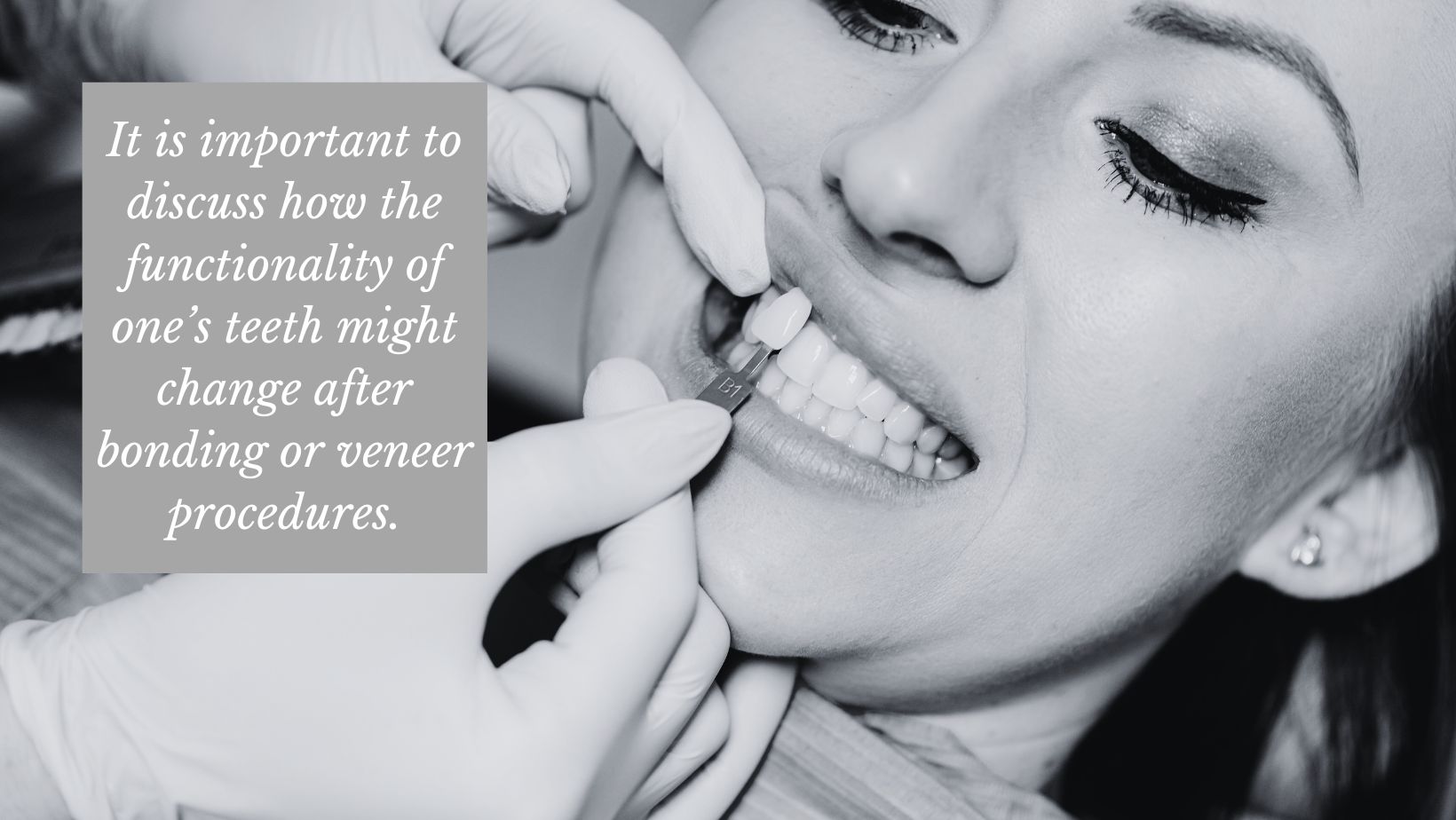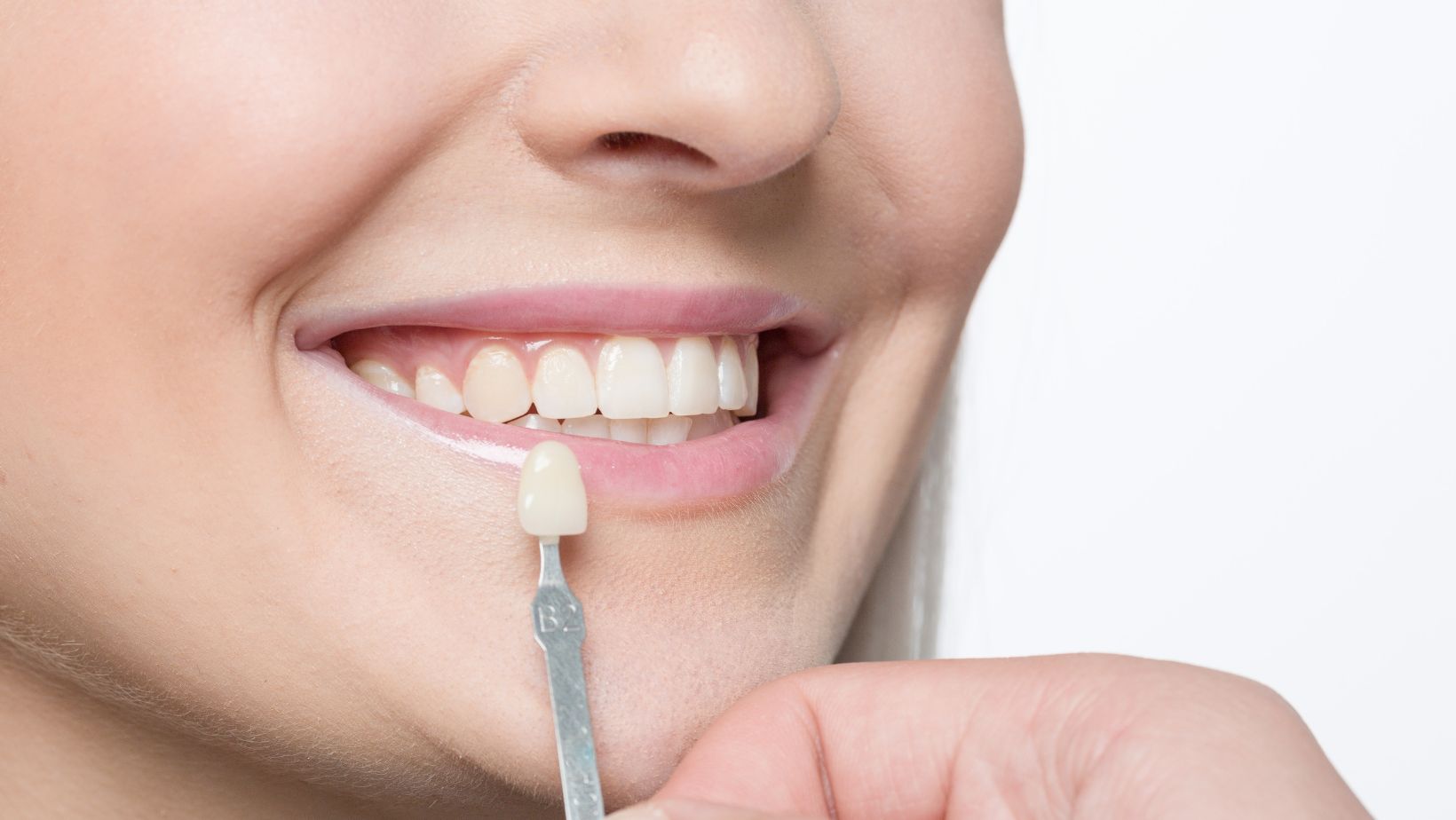Two common ways patients look to improve their smile are teeth bonding and veneers. Each procedure offers its own benefits, and both are effective ways to improve the appearance of one’s teeth. This blog will discuss each treatment in detail, the upsides and drawbacks, and the long-term implications.
What Is Bonding?
In the bonding process, a dentist attaches materials like porcelain or resin directly to the tooth. These materials are fused with the tooth’s natural enamel or dentin to create a stronger structure and improved appearance.
Dental bonding is often used to treat minor cracks or tooth discoloration. The composite resin used in bonding often can be color-matched to a patient’s teeth for a more-natural look.
Bonding is a non-invasive procedure that typically can be completed in a single visit. The treatment is reversible, making it a viable short-term option to improve the shape and appearance of one’s teeth.
What Are Veneers?
Most patients have some familiarity with veneers. Veneers are essentially caps that cover the front side of teeth and can also camouflage minor orthodontic problems. These thin shells are made in a dental lab from a model of a patient’s mouth provided by a dentist. To apply veneers, a small amount of enamel is removed from the tooth to properly fit the shell and give a natural appearance.
Like bonding, veneers can help correct stained or chipped teeth. Veneers are also a good option for correcting decayed or crooked teeth and can help fix minor gaps or misalignment issues.
Veneers are another option to improve one’s overall smile; however, it is a more permanent process. Because of the removal of tooth enamel, veneers are irreversible. This procedure also takes longer to complete, with a minimum of two visits.
It should be noted that there are multiple types of veneers. Similar to bonding, direct composite veneers are applied directly to one’s tooth. Composite veneers can last up to seven years and require similar maintenance as bonding, which will be discussed later. Indirect composite veneers are applied differently than composite veneers. Indirect veneers are made custom at a dentist’s office or in a lab. While waiting for the indirect veneers to be finished, patients receive a temporary set of veneers. Once ready, the indirect veneers are applied to the teeth with a layer of adhesive. Indirect veneers are more durable than direct composite veneers, so they typically cost more.
Cost Breakdown: Bonding vs. Veneers
A big factor that differentiates bonding and veneers is cost. On average, a single veneer tooth costs between $500 to $1,100. Veneers are also considered cosmetic. This means they will likely not be covered by insurance, requiring the patient to pay out of pocket.
Teeth bonding has a significantly lower price tag. The average price per tooth bonding ranges from $300 to $600. Even at the top range, bonding is still a fraction of the cost of veneers.
Keep in mind that these are just the upfront costs of each procedure. Other factors, like maintenance, should be considered when weighing each option.
Maintenance Considerations
When deciding between bonding and veneers, one should consider the maintenance of both procedures. Porcelain veneers are very durable, on average lasting up to 15 years. They are stain-resistant, requiring less maintenance or the need for teeth-whitening. The guarantee of a long-lasting white smile is one of the many reasons for veneers’ popularity.
Teeth bonding is not as durable. They often have to be replaced every few years due to staining or discoloration. While bonding presents less-expensive upfront costs, long-term maintenance should also be taken into consideration.

Eating with Your New Dental Work
It is important to discuss how the functionality of one’s teeth might change after bonding or veneer procedures. The primary function of teeth is to break down food. After having one of these procedures, there are a few precautions one must take.
The first few days after applying veneers, patients often experience sensitivity to hot and cold temperatures. While this sensation usually subsides, increased food sensitivity is something to consider when thinking about veneers. It might require one to change or add products to their dental hygiene routine to help manage symptoms.
Bonding also requires some adjustments to one’s diet. Immediately following the procedure, one should avoid food with high acidity, such as coffee, soda, or even tomato sauce, to reduce the risk of staining. Even after initial recovery, bonding patients are advised to avoid chewing hard foods like nuts, candy, popcorn, or ice that can break down bonding. Sugar can also eat away at bonding and lead to discoloration.
Pick a Procedure
If you have additional questions about bonding or veneers, talk to your dentist. A dental professional can help determine what is the right procedure for you, based on your goals and budget. If you are currently looking for a dental provider, complete our make an appointment form, and we will help you find one in your area.


